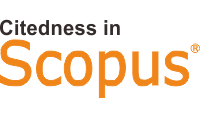Managing TikTok Content Strategies to Enhance Tourist Engagement: A Case Study of Bukit Sinyonya Tourism Village
DOI:
https://doi.org/10.35313/jtospolban.v5i2.186Keywords:
Content Marketing, TikTok, Tourism Village, Narrative Engagement, Community-Based TourismAbstract
This study explores strategic approaches to managing TikTok content to enhance tourist attraction at the Bukit Sinyonya Tourism Village in Banten. Using a qualitative case study method, the research examines how the local tourism awareness group (Pokdarwis) organises content planning, creative production, and distribution on TikTok. Data were gathered through in-depth interviews, participant observation, and digital content analysis. Drawing on content marketing theory and narrative engagement theory, the study identifies three key stages in content strategy: crafting emotionally resonant themes, producing authentic short videos, and evaluating audience interaction using TikTok analytics. Visual aesthetics, emotional storytelling, and trend adaptation significantly influence audience engagement and visit intention. The findings contribute theoretically by contextualising community-based digital marketing within rural tourism promotion, and practically by offering actionable strategies for local tourism managers. This research highlights how authentic, experience-driven storytelling on social media can strengthen destination branding and foster sustainable tourism development in digitally emerging communities.
References
Cheng, Z., & Li, Y. (2024). Like, Comment, and Share on TikTok: Exploring the Effect of Sentiment and Second-Person View on the User Engagement with TikTok News Videos. Social Science Computer Review, 42(1). https://doi.org/10.1177/08944393231178603
Fadhilah, F., & Saputra, G. G. (2021). Pengaruh content marketing dan e-wom pada media sosial tiktok terhadap keputusan pembelian generasi z. Jurnal Ekonomi, Keuangan Dan Manajemen Inovasi, 17(3), 505–512.
Gozali, T., & Tunjungsari, H. K. (2024). (2024). The Role of TikTok Celebrity and Destination Authenticity in Increasing Travel Intention. International Journal of Application on Economics and Business, 2(2), 3349-3357.
Lin, L., Zhang, R., Mohd Adnan, H., & Fauzi, A. (2025). “Not all travel videos are equal.” Examining the effects of short travel videos on travel intentions and electronic word-of-mouth. Journal of Vacation Marketing, 31(4), 1041-1055.
Ling, C., Blackburn, J., De Cristofaro, E., & Stringhini, G. (2022). Slapping Cats, Bopping Heads, and Oreo Shakes: Understanding Indicators of Virality in TikTok Short Videos. ACM International Conference Proceeding Series. https://doi.org/10.1145/3501247.3531551
Liu, C., Jiang, M., & Muhammad, Z. A. (2024). The impact of TikTok short video factors on tourists’ behavioral intention among Generation Z and Millennials: The role of flow experience. Plos One, 19(12), e0315140.
Lu, Y., Lai, I. K. W., Liu, X. Y., & Wang, X. (2022). Influence of memorability on revisit intention in welcome back tourism: The mediating role of nostalgia and destination attachment. Frontiers in Psychology, 13. https://doi.org/10.3389/fpsyg.2022.1020467
Lusianingrum, F. P. W., & Pertiwi, W. N. B. (2023). Applying Stimulus-Organism-Response (SOR) Adoption for Predicting Generation Z’s Intention to Visit Tourism in Indonesia. Qubahan Academic Journal, 3(4), 277–288. https://doi.org/10.58429/qaj.v3n4a180
Lusianingrum, F. P. W., Pertiwi, W. N. B., & Zelliana, D. (2023). Online Treveler Reviews: How to Build the Intention of Generation Z Travelers. https://doi.org/10.2991/978-2-38476-112-8_12
Park, H., Kim, H. S., & Park, H. W. (2021). A Scientometric Study of Digital Literacy, ICT Literacy, Information Literacy, and Media Literacy. Journal of Data and Information Science, 6(2). https://doi.org/10.2478/jdis-2021-0001
Radovanović, B. (2022). TikTok and Sound: Changing the ways of Creating, Promoting, Distributing and Listening to Music. INSAM Journal of Contemporary Music, Art and Technology, 9. https://doi.org/10.51191/issn.2637-1898.2022.5.9.51
Rathore, S. (2020). Analyzing the influence of user-generated-content (UGC) on social media platforms in travel planning. Turizam, 24(3). https://doi.org/10.5937/turizam24-24429
Salsabila, N., & Setiawan, B. (2025). The Aesthetics of TikTok Content in Enhancing Tourists’ Intention to Visit Labuan Bajo. An International Journal Tourism and Community Review, 2(3), 25–32.
Singh, N., Jaiswal, A., & Singh, T. (2023). Best time to post and review on Facebook and Instagram: analytical evidence. South Asian Journal of Marketing, 4(2). https://doi.org/10.1108/sajm-09-2022-0059
Wengel, Y., Ma, L., Ma, Y., Apollo, M., Maciuk, K., & Ashton, A. S. (2022). The TikTok effect on destination development: Famous overnight, now what? Journal of Outdoor Recreation and Tourism, 37. https://doi.org/10.1016/j.jort.2021.100458
Yang, S., Yang, H., Du, L., Ganesh, A., Peng, B., Liu, B., ..., & & Liu, J. (2025). Swat: Statistical modeling of video watch time through user behavior analysis. In Proceedings of the 31st ACM SIGKDD Conference on Knowledge Discovery and Data Mining V., 1, 2768–2778.
Yang, W., Wei, Y., Jingru, S., & & Mi, Z. (2025). The Influence of TikTok User-Generated Content Short Videos on Tourists’ Willingness to Engage in Rural Tourism: The Mediating Role of Destination Image Perception. Journal of Resources and Ecology, 16(4), 1185-1195.
Zawacki, E. E., Bohon, W., Johnson, S., & Charlevoix, D. J. (2022). Exploring TikTok as a promising platform for geoscience communication. Geoscience Communication, 5(4). https://doi.org/10.5194/gc-5-363-2022
Zhu, C., Hall, C. M., Fong, L. H. N., Liu, C. Y. N., & & Koupaei, S. N. (2024). Vividness, narrative transportation, and sense of presence in destination marketing: empirical evidence from augmented reality tourism. Asia Pacific Journal of Tourism Research, 30(10), 1354–1366. https://doi.org/https://doi.org/10.1080/10941665.2024.2383218
Zhu, C., Hoc Nang Fong, L., Gao, H., Buhalis, D., & Shang, Z. (2022). How does celebrity involvement influence travel intention? The case of promoting Chengdu on TikTok. Information Technology and Tourism, 24(3). https://doi.org/10.1007/s40558-022-00233-w
Downloads
Published
Issue
Section
License
Copyright (c) 2025 Fadhilah Fadhilah, Farah Putri Wenang Lusianingrum, Galih Ginanjar Saputra

This work is licensed under a Creative Commons Attribution-NonCommercial-ShareAlike 4.0 International License.



.png)

















